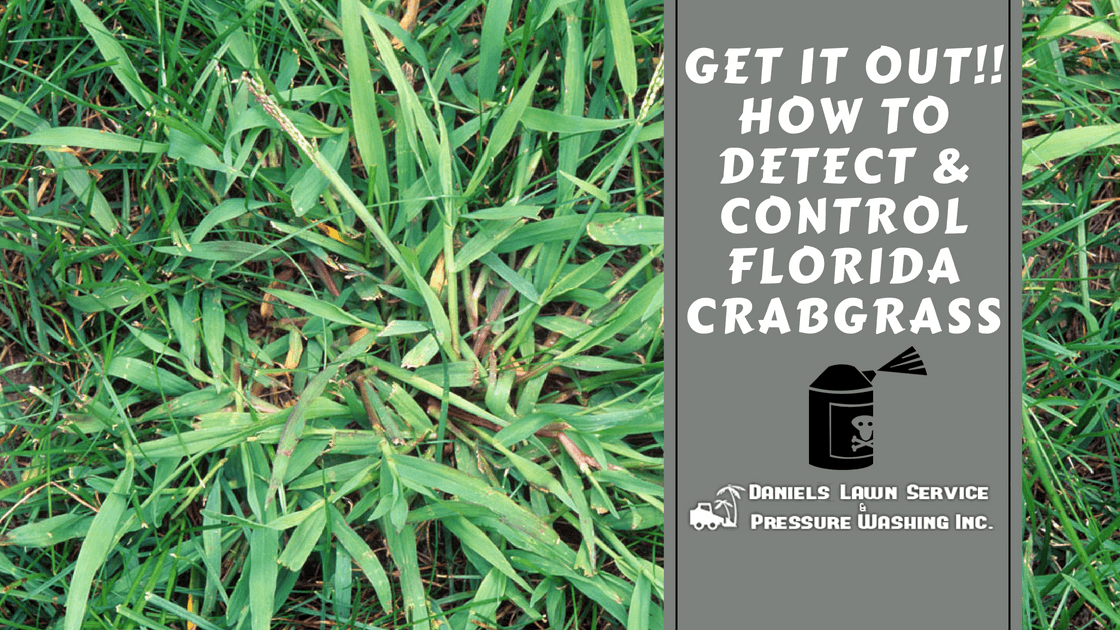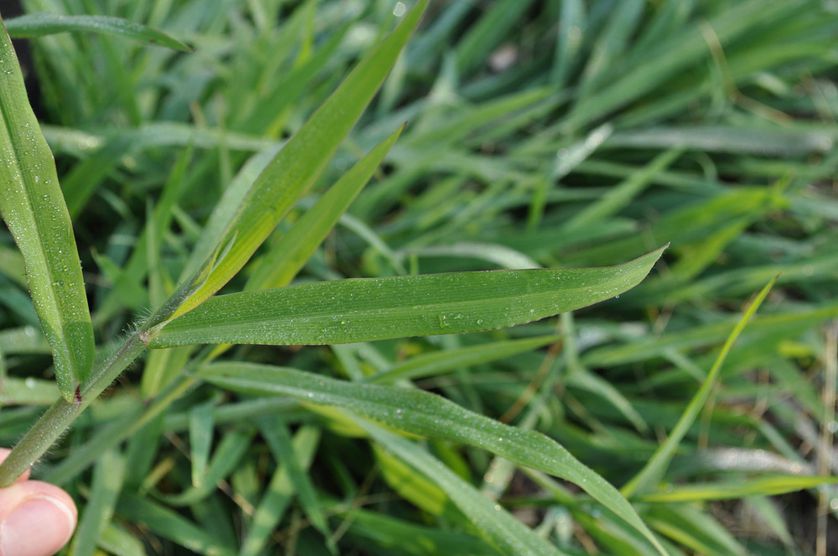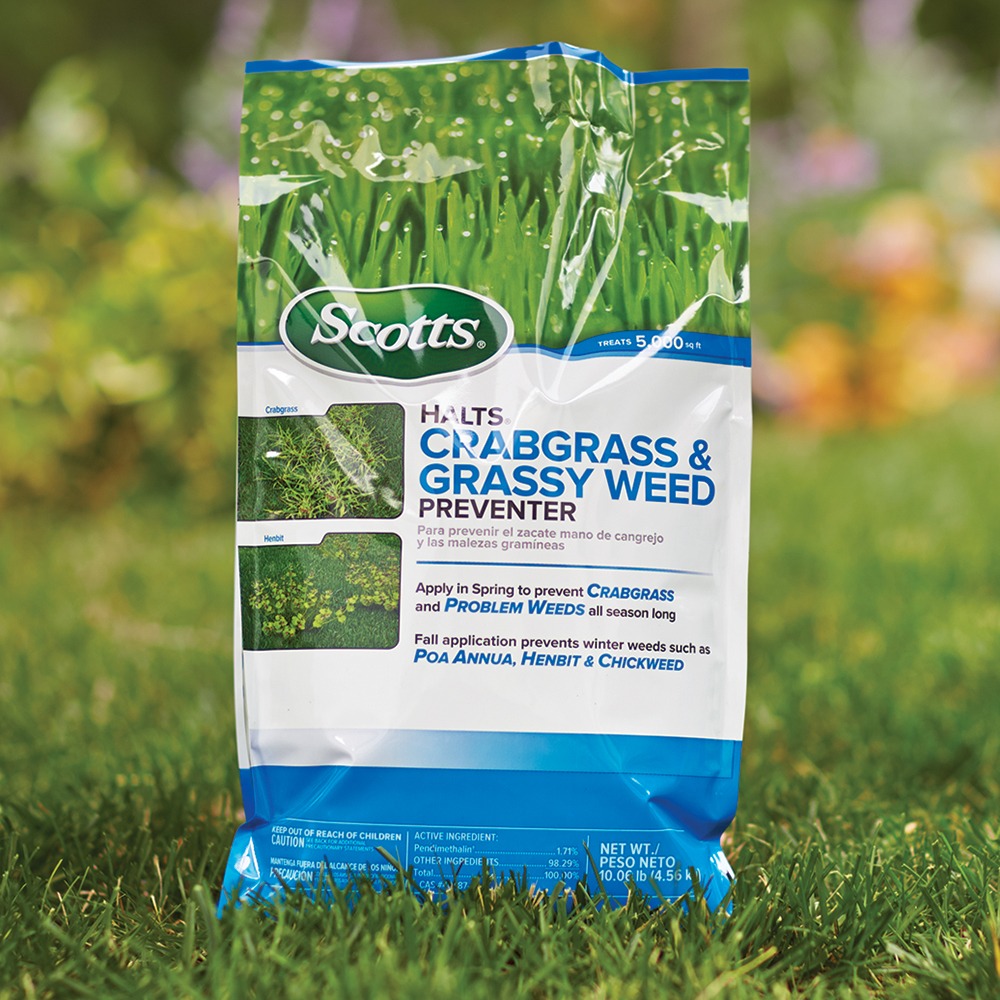

Know how to identify and control crabgrass!
Florida is widely known for its limited weather selection of sunshine or hurricanes. Those very seasons are what make caring for your lawn more difficult. The on-again, off-again rain and shine creates the potential for an onslaught of resilient crabgrass. Despite its lavish appearance, this grassy weed won’t do any favors for your yard.
Lawns in Florida are susceptible to crabgrass largely due to the spring sun and summer hurricane seasons. The two closely coincide with the plant’s germination cycle and create the ideal environment for the plant to thrive. Florida’s dry season runs from October to April, and is perfect for creating sun-scorched or bare spots in your lawn. The exposed soil creates a direct route for a surplus of water to reach the seeds. Without a dense root system from healthy grass to compete against, the crabgrass is free to grow and spread. For this same reason they are prone to any edging, for example, against a sidewalk, where there is not a lot of turf and rain often pools.
What does crabgrass look like?
The first step to controlling crabgrass is determining if the weed is present. When identifying crabgrass, it is easier to consider the appearance by estimating its age. Crabgrass seedlings will resemble a  small corn plant, with blades around ¼” wide. They are light green in color, and quickly develop side shoots that spread across the ground in a star-like pattern. The plant’s width separates it from normal lawn grass, which is much thinner and grows up from a central point. Utilize the crabgrass pictures shown to help identify the stage of the weeds in your lawn.
small corn plant, with blades around ¼” wide. They are light green in color, and quickly develop side shoots that spread across the ground in a star-like pattern. The plant’s width separates it from normal lawn grass, which is much thinner and grows up from a central point. Utilize the crabgrass pictures shown to help identify the stage of the weeds in your lawn.
Unbeknownst to many, crabgrass seeds are already in your lawn’s soil, and can last for years from the time they are spread. The seeds begin to germinate in early spring, around May and June, when temperatures reach 65° to 70° Fahrenheit. Around July and August, the crabgrass will have breached the soil and is more noticeable in thinner patches of lawn. At their peak, crabgrass will sprout a head and drop their seeds. Following the first bout of cold weather, they will die and leave a patch in your lawn where the plant will take off again next year. This cycle will continue unless you are able to stop the seeds from sprouting.
Why is crabgrass bad?
While crabgrass may not look terrible, its removal will have you in a fit. Complete crabgrass removal is a tricky task – however, the plant can be controlled. It is highly unlikely that you will ever entirely kill the crabgrass, as thousands of seeds are released every year. In order to prevent it from the likely possibility of spreading, you would need to kill every single seed. To do so would mean killing the healthy grass surrounding it and reseeding. Considering that the seeds can last for several years, this makes success nearly impossible. Rather than killing your lawn in an attempt to get rid of crabgrass, we encourage management with a dense root system.
How do I control and prevent crabgrass?
Achieve a dense root system by keeping a lush and healthy lawn. When possible, fertilizing your lawn will help strengthen the existing roots and maintain color. Always ensure that you are cutting the grass high enough that the soil won’t be over-watered. This will also prevent the chance of sun scorching, creating thin areas for future weeds.
The best crabgrass preventer is a pre-emergent herbicide. The granular herbicide creates a chemical barrier at the soil line that crabgrass cannot penetrate. It should be applied prior to the soil reaching 60° Fahrenheit, around late March or early April. The weed, unable to breach the soil barrier, will not be able to sprout a seed head. It is important to remember, however, that the potency of the pre-emergent can be diminished within three to six weeks under Florida’s intense sunlight and rain. To overcome this obstacle, use a post-emergent herbicide to halt any shoots that manage to break through the soil and haven’t reached three to four inches. This crabgrass killer will stop the spread of seeds – and your frustration – from rolling into next year.
What products should I use to control crabgrass?
When considering what crabgrass herbicide to use, there is a wide array of  options. Depending on the extent of damage the weed is causing to your lawn, contemplate the product as well as its potency. Scotts Halts Crabgrass and Grassy Weed Killer is readily available at most retailers with an outdoor department and is a highly rated pre-emergent. Drive XLR8 is a professional post-emergent weed killer that is less available at a retailer and is best left to a licensed and insured lawn care company. It will kill crabgrass as well as the area around it where seeds may have fallen, leaving an orange patch until winter. For your lawn’s sake, we recommend contacting a professional if you feel your lawn has reached such a dire point.
options. Depending on the extent of damage the weed is causing to your lawn, contemplate the product as well as its potency. Scotts Halts Crabgrass and Grassy Weed Killer is readily available at most retailers with an outdoor department and is a highly rated pre-emergent. Drive XLR8 is a professional post-emergent weed killer that is less available at a retailer and is best left to a licensed and insured lawn care company. It will kill crabgrass as well as the area around it where seeds may have fallen, leaving an orange patch until winter. For your lawn’s sake, we recommend contacting a professional if you feel your lawn has reached such a dire point.
At Daniel’s Lawn Service & Pressure Washing our experts prioritize lawn care and know how hard maintenance can be. Let us take a load off your shoulders, so you can get back to appreciating your lawn instead of working on it. Contact us today to see the services we offer!


